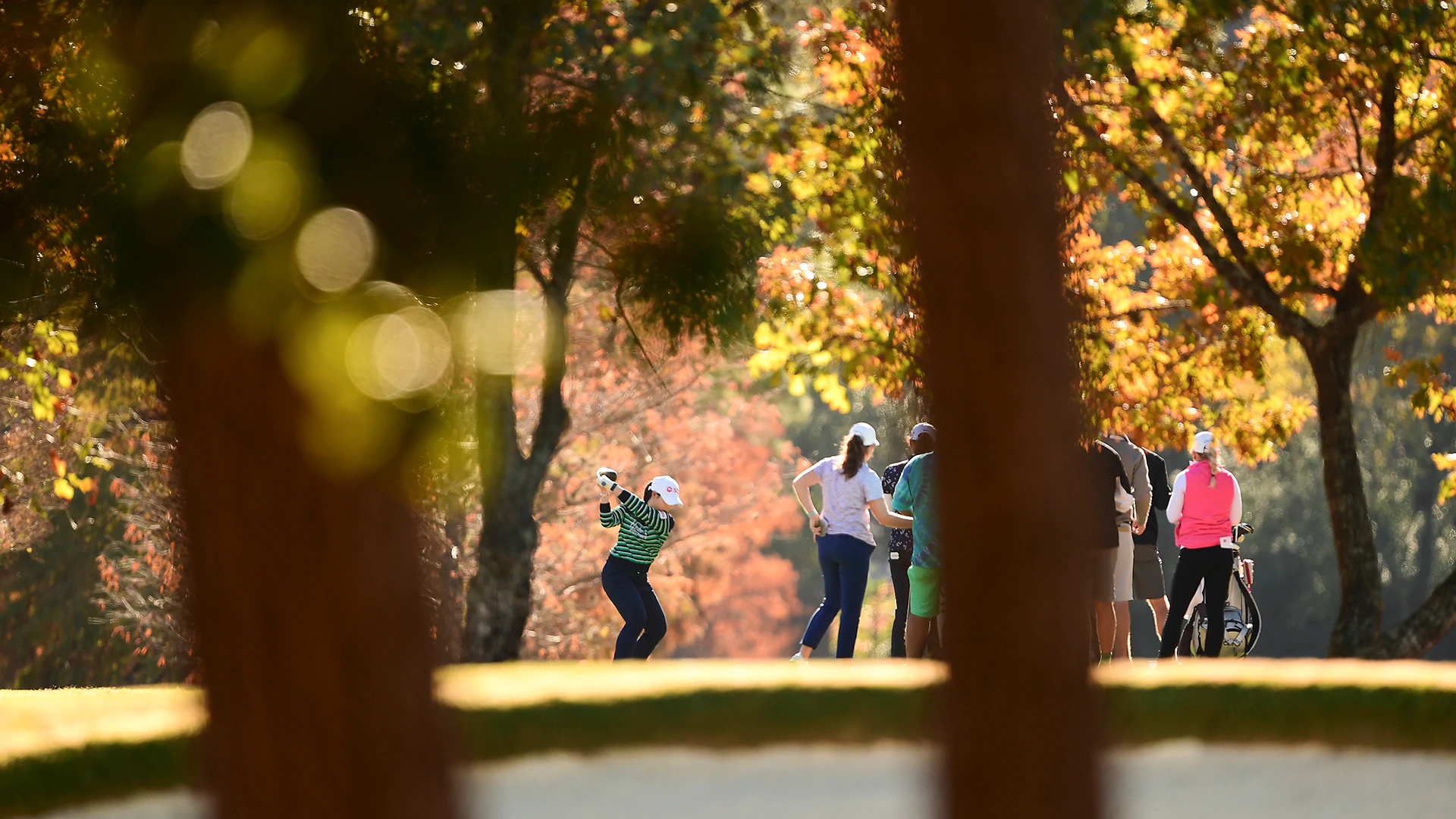U.S. Women’s Open competitors seeing double – host courses, that is

In a year when anything and everything seems possible, it should come as no surprise that the final major championship of 2020 would also feature a few curveballs.
The 75th playing of the U.S. Women’s Open was first scheduled to be played June 4-7 at Champions Golf Club in Houston, Texas, but because of COVID-19 it was postponed until the final month of the year. For the first time in championship history, the U.S. Women’s Open is being played in December – and on not one but two courses, also a first for the championship.
This week, the sunrise in Houston is just after 7 a.m. CT and sunset is around 5:20 p.m. That means there is a little more than 10 hours of daylight each day in which to stage the season’s final major championship. So, the USGA got creative and added a second course. While this doubled the playing opportunities, with players going off both the first and 10th tees in groups of three, it also doubled the amount of preparation involved for players, most of which are seeing the courses for the first time this week.
“I played tournaments where there’s been two courses, but definitely not a major,” said Mel Reid, a first-time winner in 2020. “That’s why I just think it’s going to be a new test for the girls. To prepare for [this] is going to be a lot harder.”
During the first two days, players will compete on the Cypress Creek Course, which was originally slated to solely host the major championship, and the Jackrabbit Course. During the third and final round, players will complete exclusively on Cypress Creek. The Jackrabbit is expected to play slightly shorter at 6,558 yards, while Cypress Creek is slated to play 6,731 yards. Both will play as par 71s.
Danielle Kang, winner of the 2017 KPMG Women’s PGA Championship at Olympia Fields Country Club, is notorious for doing her homework when it comes to course set up. She’s turned to local college players and PGA Tour professionals like Dustin Johnson for insights into courses she hasn’t played before. When she can’t track down anyone to give her an inside scoop, she turns to Google maps to get a bird’s eye view. She’s being doing her homework when it comes to Champions Golf Club, where she took advantage of advance practice round opportunities to try and learn both courses ahead of the championship.
“I think being able to calibrate between the golf courses back and forth will be really key, because they’re both rolling differently,” Kang said. “They break differently, speed is different, and grass is a little different.”
U.S. Women’s Open: Full-field tee times | Full coverage
While figuring out the nuances of two major-caliber venues in a three-day span is a challenge in and of itself, the ability to do so presents another challenge for players who are looking to conserve whatever energy they can for the start of the championship on Thursday. Sei Young Kim, who is No. 2 ranked in the Rolex Rankings and the most recent major champion at the KPMG Women’s PGA Championship, has been on a whirlwind tour of Champions Golf Club and on Tuesday found herself in need of a break.
“I played 18 holes yesterday, 18 today, and I plan to play nine tomorrow, and certainly I’m not used to having two courses at a major tournament,” Kim said through a translator. “The preparation has been different, but also trying to conserve energy for the week as well.”
The first groups will tee off both the first and 10th tees on the Cypress Creek and Jackrabbit Courses on Thursday morning at 9:20 a.m. CST. The final groups will tee off at 11:32 a.m. This bunch in tee times created another first: the USGA is utilizing both ends of the driving range in order to accommodate the large number of players needing to warm up around the same time, and it built fences on each side some 30 yards in front of the hitting areas to prevent long drives from rolling into players on the other end.
Only in 2020, right?
